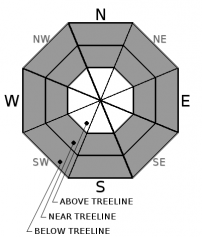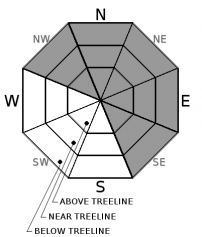| Saturday | Saturday Night | Sunday | |
|---|---|---|---|
| Weather: | Cloudy with widespread snow showers in the morning and scattered snow showers in the afternoon | Cloudy with widespread snow showers in the evening and scattered snow showers after midnight | Partly cloudy with a slight chance of snow showers in the morning |
| Temperatures: | 20 to 25 deg. F. | 6 to 12 deg. F. | 24 to 29 deg. F. |
| Mid Slope Winds: | Southwest | Southwest | Southwest |
| Wind Speed: | 10 to 15 mph with gusts to 30 mph in the morning | 10 to 15 mph in the evening decreasing overnight | 10 to 15 mph with gusts to 25 mph in the morning becoming light in the afternoon |
| Expected snowfall: | 1 to 3 | 1 to 4 | 0 |
| Saturday | Saturday Night | Sunday | |
|---|---|---|---|
| Weather: | Cloudy with widespread snow showers in the morning and scattered snow showers in the afternoon | Cloudy with widespread snow showers in the evening and scattered snow showers after midnight | Partly cloudy. Slight chance of snow showers in the morning. |
| Temperatures: | 15 to 21 deg. F. | 3 to 9 deg. F. | 20 to 26 deg. F. |
| Ridge Top Winds: | Southwest | Southwest | West |
| Wind Speed: | 15 to 25 mph with gusts to 50 mph decreasing to 35 mph in the afternoon | 10 to 15 mph with gusts to 25 mph | 15 to 20 mph with gusts to 35 mph decreasing to 25 mph in the afternoon |
| Expected snowfall: | 1 to 4 | 1 to 4 | 0 |




























